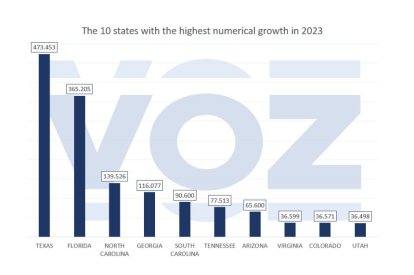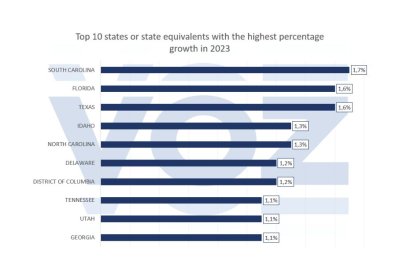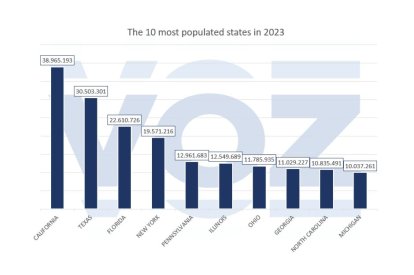Southern states lead population growth in the U.S.
The U.S. Census recorded an increase of more than 1.6 million people in 2023. The country is close to 335 million inhabitants.

(Unsplash)
"U.S. migration returning to pre-pandemic levels and a drop in deaths are driving the nation’s growth," said Kristie Wilder, a demographer in the Population Division of the Census Bureau. These are the primary reasons that the United States saw a population increase in 2023. Wilder added that the number of births has decreased, though this "was tempered" with the decrease in deaths.
According to data recently published by the Census Bureau, 334,914,895 inhabitants are registered in the United States, which represents an increase of more than 1.6 million people over 2022. The country saw a 0.5% population growth, a slight increase compared to the previous year (0.4%). The percentage increase from 2020 to 2021 (0.2%) was also lower.
Also notable is the number of states whose population has increased, higher than the previous year. In total, 42 states and the District of Columbia saw population growth in 2023, compared to just 31 states and the District of Columbia in 2022. Those 11 states that went from population decline in 2022 to growth in 2023 are New Jersey, Ohio, Minnesota, Massachusetts, Maryland, Michigan, Kansas, Rhode Island, New Mexico, Mississippi and Alaska.
Southern states drive census growth
The country's increased population comes mainly from southern states. In fact, they accounted for 87% of population growth, and one of them far surpassed the rest.
Texas led the nominal growth, adding almost half a million registered people (473,453). The increase is the result of improved living conditions and a healthier economy with less fiscal pressure than other states. Florida is positioned after The Lone Star State, with an increase of 365,205, followed by North Carolina (139,526) and Georgia (116,077).

Of the states with the highest growth by percentage, the first on the list is South Carolina, with a population increase of 1.7% in 2023. Next are Florida and Texas, with 1.6% each; and Idaho and North Carolina, with 1.3% each.

California continues to regress
Despite having the largest number of inhabitants of any state in the union, California experienced population decline in 2023 (-75,423), following a similar drop in 2022. In this period, The Golden State tallied 38,965,193 resident, while the previous year it had a record of 39,040,616. This decline can be attributed to a lack of confidence in the state's living conditions due to the increase in crime, a turbulent economy and high taxes.
Apart from California, there are seven other states that experienced a decline in their population: New York (-101,984, the most of any state), Illinois (-32,826), Louisiana (-14,274), Pennsylvania (-10,408), Oregon (-6,021), Hawaii (-4,261) and West Virginia (-3,964).
The most populous states
After California, the next most populous state is Texas. The nearly half a million people added by The Lone Star State in 2023 keep it in second position, with 30,503,301 residents. If Texas maintains its current growth rate (in 2020, its population estimate was 29,145,459 citizens) it is within reason that it could be the state with the largest number of inhabitants in a matter of years.

The state with the third-highest population, Florida, extended its margin over fourth-place New York. The Sunshine State went from having 22,245,521 inhabitants in 2022 to 22,610,726 in 2023. As mentioned, New York follows, with 19,571,216, trailed by Pennsylvania (12,961,683) and Illinois (12,549,689). Each of these three states saw their population decline in 2023.

























